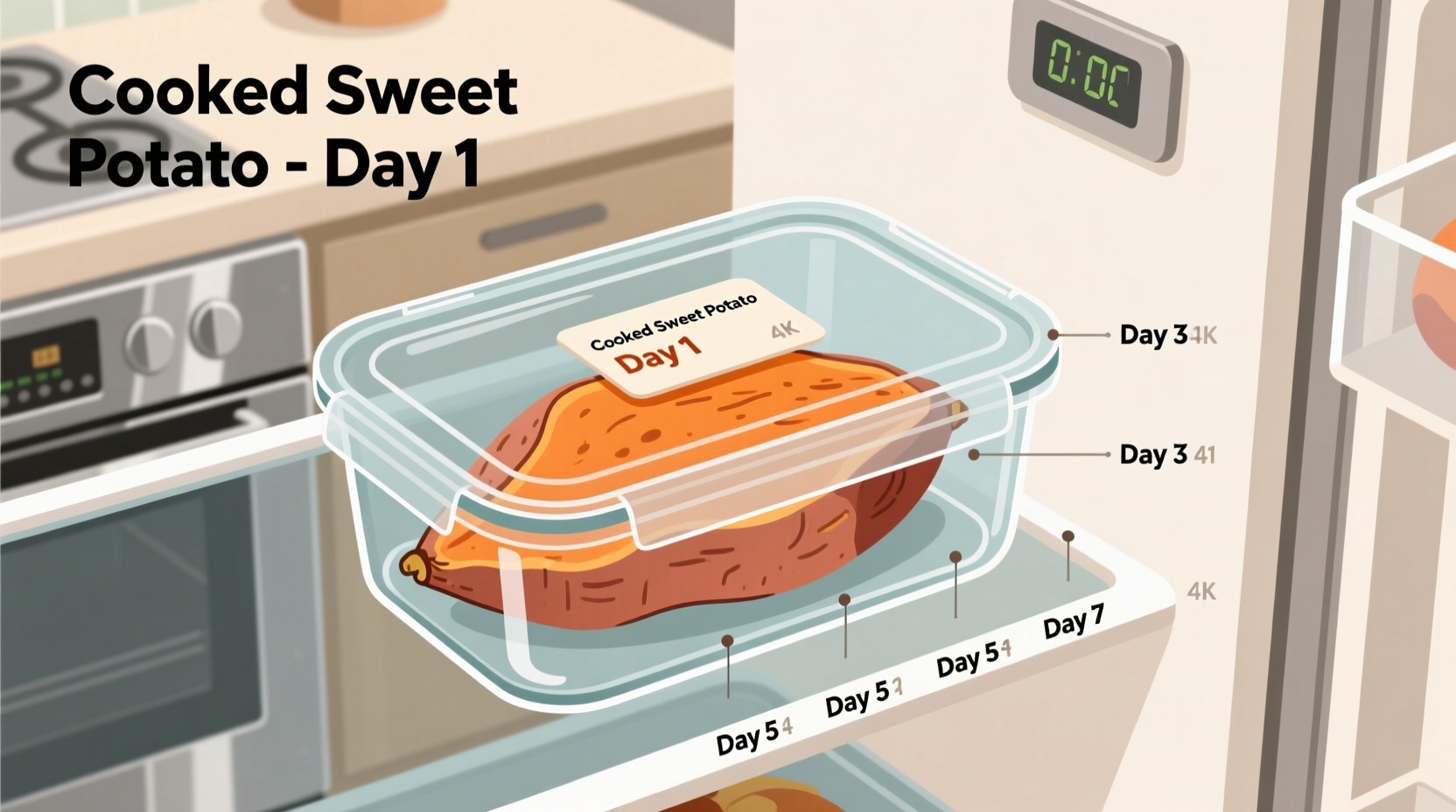Wondering if those leftover sweet potatoes are still good? You're not alone. Millions of home cooks face this question weekly as they try to reduce food waste while keeping their families safe. Getting storage times right matters more than you might think - improper handling of cooked vegetables accounts for nearly 12% of household foodborne illness cases according to the CDC.
The Science-Backed Shelf Life of Cooked Sweet Potatoes
While many believe cooked vegetables last longer, sweet potatoes follow strict food safety parameters. The 3-5 day window isn't arbitrary - it's based on bacterial growth rates in starchy vegetables. When stored at proper refrigerator temperatures (40°F or below), pathogens like Salmonella and Listeria multiply slowly enough to keep food safe for this period.
According to the USDA Food Safety and Inspection Service, cooked vegetables including sweet potatoes should be consumed within 3-4 days. The FDA's Food Code aligns with this guidance, noting that ready-to-eat potentially hazardous foods have a maximum 7-day shelf life, with 3-5 days being optimal for vegetable-based dishes.
What Actually Determines Your Sweet Potatoes' Freshness?
Several factors influence whether your cooked sweet potatoes will last the full 5 days or spoil sooner:
| Storage Factor | Optimal Practice | Risk of Early Spoilage |
|---|---|---|
| Container Type | Airtight glass or BPA-free plastic | High (moisture loss or contamination) |
| Refrigerator Temp | Consistently 40°F (4°C) or below | Extreme (accelerated bacterial growth) |
| Cooling Time Before Storage | 2 hours or less at room temperature | High (bacteria multiplication zone) |
| Added Ingredients | Plain sweet potatoes last longest | Medium (dairy/fats spoil faster) |
Spotting Spoilage: Beyond the Clock
While the 3-5 day rule provides a safety baseline, always inspect your sweet potatoes before eating. Trust your senses over the calendar:
- Visual changes: Dark spots, mold growth, or significant color changes (especially greenish hues)
- Texture issues: Slimy surface, excessive moisture, or mushiness beyond normal softness
- Odor warnings: Sour, fermented, or generally "off" smells (fresh sweet potatoes should have earthy sweetness)
- Taste test (last resort): If other signs are ambiguous, a tiny taste can reveal sourness or bitterness
When in doubt, throw it out. The USDA emphasizes that pathogens causing foodborne illness often don't produce noticeable changes in food appearance, smell, or taste.
Maximizing Freshness: Pro Storage Techniques
Follow these evidence-based methods to get the most from your cooked sweet potatoes:
- Cool rapidly: Spread cooked sweet potatoes in a single layer on a baking sheet before refrigerating to drop from cooking temperature to safe levels within 2 hours
- Portion control: Divide into single-serving containers to avoid repeated temperature changes from opening the same container
- Air management: Remove excess air from containers - oxygen accelerates spoilage in starchy foods
- Strategic placement: Store in the main refrigerator compartment (not the door) where temperatures remain most consistent
- Label everything: Note cooking date with marker directly on containers to avoid guesswork

Safe Reheating Practices
Proper reheating destroys potential pathogens that may have developed during storage:
- Thoroughly heat to 165°F (74°C) throughout - use a food thermometer for accuracy
- Add moisture when reheating to prevent drying (a splash of water or broth)
- Stir frequently for even heating, especially with mashed preparations
- Never partially reheat and return to refrigerator - this creates dangerous temperature cycling
Freezing for Long-Term Storage
For extended preservation beyond 5 days, freezing is your best option:
- Cool completely before freezing to prevent ice crystal formation
- Use freezer-safe containers with 1/2 inch headspace for expansion
- Label with date - frozen sweet potatoes maintain quality for 10-12 months
- Thaw overnight in refrigerator before reheating (never at room temperature)
Research from the National Center for Home Food Preservation confirms that properly frozen sweet potatoes retain nutritional value and texture significantly better than refrigerated counterparts stored beyond 5 days.
Special Considerations for Different Preparations
Cooking method affects storage duration:
- Plain roasted or boiled: Lasts full 5 days when stored properly
- Mashed with dairy: Reduce to 3-4 days (milk and butter accelerate spoilage)
- Sweet potato casserole: 3 days maximum due to multiple ingredients
- With added proteins: 3 days if combined with meats or eggs
University of Minnesota Extension research shows that acidic ingredients like lemon juice can extend shelf life by up to 24 hours by creating a less hospitable environment for bacteria.
Reducing Food Waste Without Compromising Safety
Follow these practical strategies to make the most of your sweet potatoes:
- Prepare only what you'll consume within 3-5 days
- Transform leftovers into new dishes (soups, pancakes, or baked goods)
- Freeze portions you won't use within 3 days
- Track usage patterns to refine future cooking quantities
Remember that food safety guidelines exist for good reason. The CDC reports that improper food storage contributes to approximately 48 million cases of foodborne illness annually in the United States. Following these evidence-based practices protects your health while reducing unnecessary waste.











 浙公网安备
33010002000092号
浙公网安备
33010002000092号 浙B2-20120091-4
浙B2-20120091-4